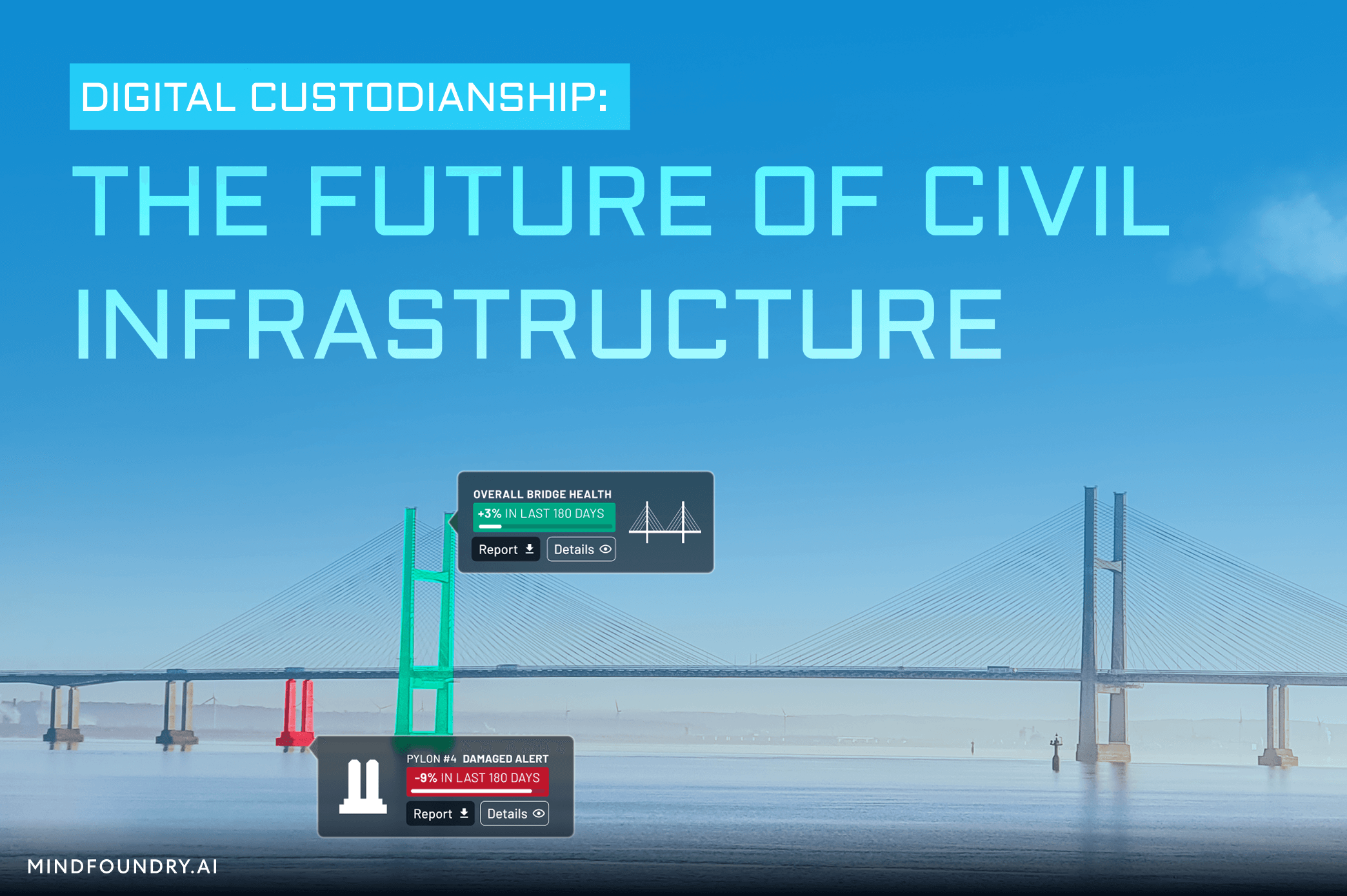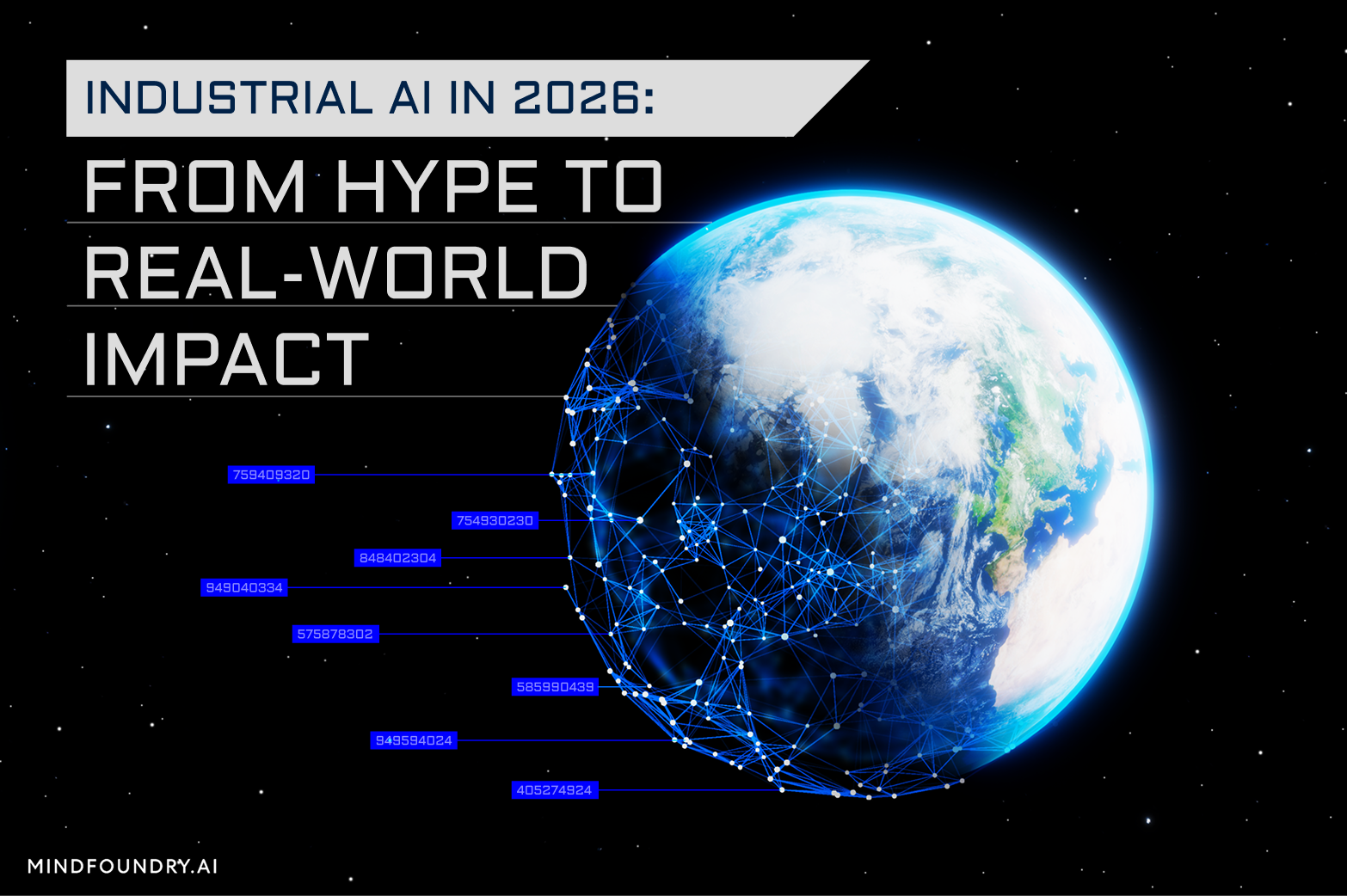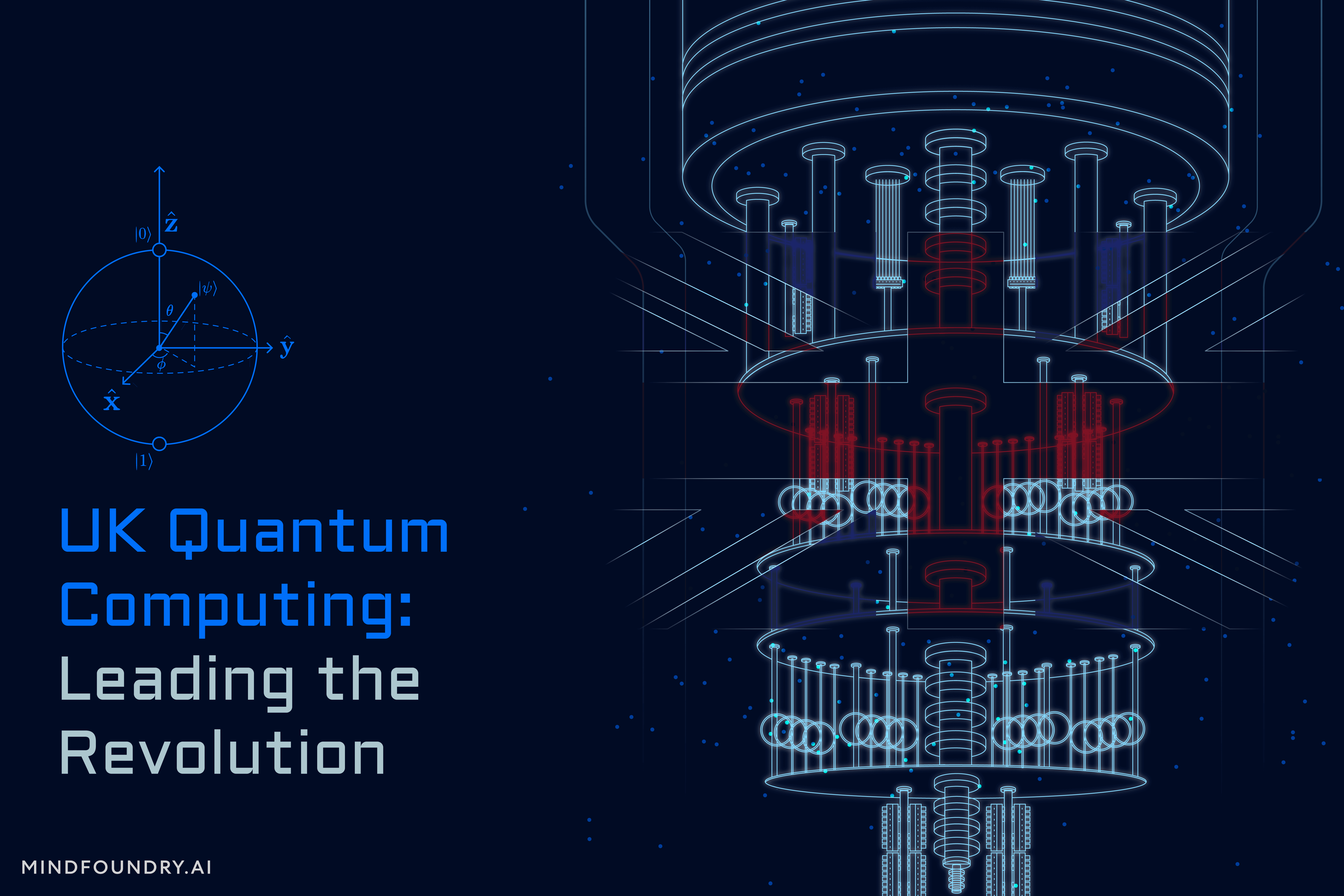AI Assurance Explained: Trust, Safety, and Operational Impact
The UK-USA Technology Prosperity Deal sees overseas organisations pledging £31 billion of investment into UK AI infrastructure. As AI investment...
4 min read
 Tom Bartley
:
Jul 11, 2025 11:21:46 AM
Tom Bartley
:
Jul 11, 2025 11:21:46 AM

For much of the 20th century, infrastructure was managed by custodians. These were engineers who knew their assets intimately and often oversaw the same bridges, tunnels, and structures for many years. They understood what an asset looked like today, how it had changed over time, and what that meant for its future.
Today, asset management is more structured, data-driven, and externalised. Specialist consultancies provide expertise, digital systems improve oversight, and new technologies support inspections. These advances have strengthened infrastructure management in many ways, yet elements of custodianship have been lost as part of this process.
With growing challenges like economic uncertainty, population growth, and climate change, we believe a new approach to infrastructure management is necessary, one that combines the expertise of civil engineers and asset owners with the power of AI, machine learning, and data science to facilitate proactive decision-making.
We believe the answer lies in Digital Custodianship.
In the UK, we are experiencing a growing crisis in our civil infrastructure. Most of our roads, bridges, tunnels, and large buildings were constructed over 50 years ago, and now they have begun to deteriorate at an accelerated rate. Consequently, one in every 25 council-maintained bridges is now classified as “substandard”, whilst 52% of local authority-managed roads are in either adequate or poor condition.
Various organisations and authorities manage our civil infrastructure, but several obstacles make their job incredibly challenging. The sheer scale of structures requiring attention is one of them, coupled with the constraints on resources and budgets that these managers have at their disposal.
One of the main problems, however, is that these managing bodies don’t have enough high-quality asset condition data on all the structures under their remit to make informed, accurate decisions about which structures to inspect, when to schedule inspections, and how best to intervene with maintenance and repairs.
In addition, our infrastructure has to contend with rising populations, shifting transport demands, and more frequent extreme weather events due to climate change. These are just some of the challenges we face now, and yet more obstacles may emerge in the near future that will deepen the crisis. The need for proactive decision-making has never been greater.
The solution requires us to regain what we have lost, not by returning to the past, but by reimagining custodianship in a way that works for the 21st century. We call this Digital Custodianship.
Custodianship in infrastructure management is more than maintenance. It is a long-term commitment to asset care, preservation, and sustainability. It doesn’t just mean responding to failures; it involves anticipating risks, prioritising investment wisely, and ensuring infrastructure remains safe and functional.
Custodianship can be characterised as having six dimensions:
Continuity of Knowledge
Timely Monitoring
Proactive Maintenance
Long-Term Sustainability
Stakeholder Stewardship
Portfolio Prioritisation
Digital Custodianship leverages the latest technology to augment each of these dimensions. However, it is not about replacing engineers with technology. It aims to empower these engineers with the latest digital technologies to enable them to perform their jobs more effectively. It is about creating the kind of human-machine teaming that preserves institutional knowledge, integrates historical data, and applies AI-driven insights to extend asset life and improve resilience. We want to ensure the right knowledge is available to the right people at the right time.
Recent advances in Machine Learning, cloud computing, and real-time data collection present new opportunities that were unfeasible even a few years ago. AI models can now process vast datasets, detect patterns such as changes in condition, and predict asset failures or loss of service with remarkable accuracy, allowing infrastructure managers to move towards more proactive stewardship.
Integrating low-cost sensors, high-resolution imaging, and automated data processing means that assets can now be monitored to determine the rate at which the condition changes and act upon this information.

How digital technologies can enhance the six dimensions of Digital Custodianship
Digital Custodianship is our vision for making infrastructure management more efficient, effective, and sustainable now and in the future. To make it a reality, inspectors, engineers, and asset owners need technology that is intuitive and easy to use and creates immediate value today while laying the foundation for even greater value tomorrow. This starts with capturing better data…
Let’s use a real-life case study: Enhancing bridge inspection efficiency with WSP.
WSP is a global engineering and professional services firm specialising in designing and managing critical infrastructure projects. They needed a solution that would not only lower the costs of manual inspections by reducing the time it takes to perform the asset assessment but also bring implicit knowledge from the structure on-site into the office, where that knowledge could be used to optimise predictive maintenance.
To meet these requirements, WSP partnered with Mind Foundry to pilot Windward Inspect. Windward Inspect combines Mind Foundry’s latest AI advancements with WSP’s practical bridge inspection expertise in a seamless, integrated workflow.
The pilot tested Windward’s ability to inspect a variety of bridges, both rail and footbridges, built with different materials such as concrete, metal, masonry, all while using multiple data capture methods, including traditional photos and 360° imagery.
Windward Inspect enabled WSP to use calibrated images of defects in inspections and deliver millimetre-accurate measurements from both current and historic images of the same defects. Crucially, this enabled them to quantitatively assess the change over time and, therefore, the risk to the asset.
It radically improved location and quantification data for defects with associated site-captured images. This will be a step-change in information quality and empower WSP to capture more and better information during inspections.
Finally, Windward Inspect's embedded AI automatically rectifies images of the structure and identifies defect types and extents, allowing WSP to directly output dimensionally accurate defect maps.
WSP found that using Windward Inspect resulted in substantial time and cost savings:
As technology for agentic AI systems accelerates, the idea of Digital Custodians is quickly moving from concept to reality. In the infrastructure space, these AI agents could soon be entrusted to proactively quantify, monitor, and forecast the condition of assets, while also optimising maintenance costs across entire portfolios.
But before we can deploy them at scale, we must first ensure they are safe, reliable, and trustworthy. That’s why Mind Foundry is helping lead the charge through our work on the ARIA Safeguarded AI programme, laying the groundwork for a future where intelligent systems act as responsible stewards of the built world.
If we can successfully integrate the latest AI and machine learning techniques into intuitive, powerful tools and put these tools in the hands of civil engineers working to protect and preserve our civil infrastructure, we can reclaim custodianship; digitally, intelligently, and for the long term.

The UK-USA Technology Prosperity Deal sees overseas organisations pledging £31 billion of investment into UK AI infrastructure. As AI investment...

Industrial AI is increasingly coming to the fore in physical industries, but achieving measurable real-world impact requires careful consideration...

Of all the technologies being explored today, Quantum technologies are some of the most exciting and potentially most revolutionary, and the UK is at...